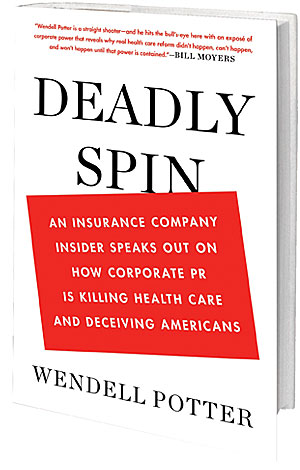My colleague Josh Baran and I worked on this mini campaign and together drafted this media statement.
AN OPEN LETTER TO JOURNALISTS FROM GASLAND DIRECTOR JOSH FOX IN RESPONSE TO ATTACKS BY GAS INDUSTRY
'GASLAND' NOMINATED FOR ACADEMY AWARD 2011
February 8, 2011 — With the recent Oscar nomination of my documentary film GASLAND, Big Gas and their PR attack machine hit a new low in its blatant disregard for the truth.
In an unprecedented move, an oil and gas industry front group sent a letter to the Academy of Motion Picture Arts and Sciences saying that the film should be ineligible for best documentary feature.
We are honored and encouraged by the Academy’s nomination. It is terrific to be acknowledged as filmmakers by the film world’s most prestigious honor. But perhaps more than that, I believe that the nomination has provided hope, inspiration and affirmation for the thousands of families out there who are suffering because of the natural gas drilling. The Oscars are about dreams, and I know that for all of us living with the nightmare of gas drilling the nomination provides further proof that someone out there cares.
Now Big Gas wants to take that away, as they have shattered the American dream for so many.
GASLAND exposes the disaster being caused across the U.S. by the largest domestic natural gas drilling campaign in history and how the contentious Halliburton-developed drilling technology called hydraulic fracturing, or fracking, threatens the water supply of millions.
Fracking is a whole-scale industrialization process that pumps millions of gallons of toxic material directly into the ground. Thousands of documented contamination cases show the harmful chemicals used have been turning up in people's water supplies in fracking areas all over the map.
We stand behind the testimonials, facts, science and investigative journalism in the film 100 percent. We have issued a point-by-point rebuttal of the group’s claims (“Affirming Gasland”), posted on our website: www.gaslandthemovie.com. (See PDF.)
It’s not just us they’re after. The gas industry goes after anyone who tries to punch a hole in their lie. A couple of weeks ago the same pro-drilling group, Energy in Depth (EID), attacked an investigative piece on drilling pollution by ProPublica, the highly credible public interest journalism organization.
And just last week, T. Boone Pickens, the most visible promoter of gas fracking, went on The Daily Show claiming that he personally has fracked over 3,000 wells and never witnessed any contamination cases, even when Jon Stewart asked him about GASLAND point-blank. He simply stated over and over again the industry lie, that fracking is safe. Not a single word of acknowledgement, or responsibility for the claims of thousands and the threat posed to millions.
The gas industry believes it can create a new reality in which their nationwide onshore drilling campaign isn’t a disaster. But no amount of PR money or slick ads can keep the stories of contamination coming from thousands of Americans from being any less true.
Recently, Congressional investigators called out frackers for pumping millions of gallons of diesel fuel directly into the ground, exposing drinking water sources to benzene and other carcinogens. This makes EID’s specious and misleading attack on the science and data in GASLAND especially ironic since Halliburton stonewalled Congressman Henry Waxman’s investigation into fracking, refusing to provide data on their use of diesel and other harmful chemicals injected in the fracking process.
There are major watershed areas providing water to millions of Americans that are at risk here, including the watershed areas for New York City and Philadelphia. The catastrophe has been widely covered not only in GASLAND, but also by hundreds of news stories, films and TV segments. This is a moment of crisis that cannot be understated.
Even before its release, the power of the film was not lost on the industry. In the March 24th edition of the Oil and Gas Journal, Skip Horvath, the president of the Natural Gas Supply Association said that GASLAND is “well done. It holds people’s attention. And it could block our industry.”
GASLAND was seen by millions and I personally toured with the film to over 100 cities. In affected areas, people came to the screenings with their contaminated water samples in tow. They came to have the truth they know shared and confirmed
As Maurice D. Hinchey, U.S. Representative (NY-22) recently said, “Thanks to GASLAND and the millions of grassroots activists across the country, we finally have a counterweight to the influence of the oil and gas industry in our nation's capital."
Big Gas is blocking the truth in their pursuit of hundreds of billions of dollars of profit. Their clear goal is to ensure our nation remains addicted to fossil fuels for the rest of this century. They seek to stifle the development of truly renewable energy.
They’re playing dirty in more ways than one, attacking the film and the testimonials and science in it instead of taking responsibility and addressing the contamination, destruction and harm that they are creating. I now know how the people in my documentary feel, to have the things they know to be true and the questions they are raising so blatantly discounted and smeared. It is truly unfortunate that the gas-drilling industry continues to deny what is so obvious to Americans living in gaslands across the nation.
Josh Fox
Director, GASLAND
gaslandthemovie.com
Media Contact: Josh Baran – jcbaran@gmail.com – 917-797-1799
Josh Fox is based in New York City and will be in Washington, D.C. on February 17. He is available for interviews. DVD screeners for the media are available.
![]() My colleague Josh Baran is on this panel at the Tribeca Film Festival this Sunday, April 24: "Are Documentary Films Changing the World?."
My colleague Josh Baran is on this panel at the Tribeca Film Festival this Sunday, April 24: "Are Documentary Films Changing the World?."






